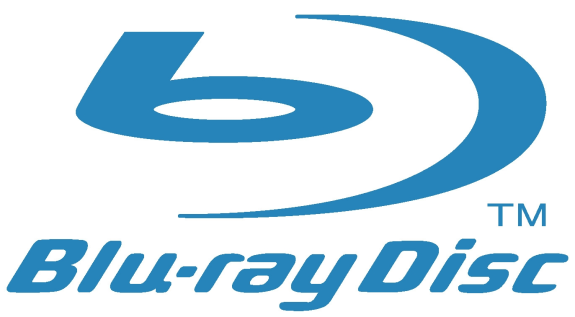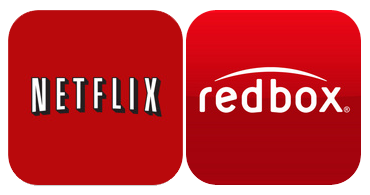Cinavia DRM: How I Learned to Stop Worrying and Love Blu-ray’s Self-Destruction
by Ganesh T S on March 21, 2012 11:00 AM EST- Posted in
- Home Theater
- Blu-Ray
- DRM
- Cinavia
DRM (Digital Rights Management) is intended to protect media from being played in an unauthorized manner. However, more often than not, it fails to serve the purpose. Many people in the content industry are fully aware that it is not possible to stop media piracy. They view DRM as a method to slow down the pirates. The panel discussion on anti-piracy measures at the HPA 2011 Tech Retreat compared this to using a key to lock a car, even though a thief with proper equipment could still steal it.
High definition content is valued by the content owners, resulting in extra efforts being taken to protect them from being pirated. For example, while standard definition Netflix streams play on a variety of platforms, high definition streams require more secure systems with protection across all stages of playback. Similarly, not much effort has been taken to stop the usage of open source DVD decrypters / decoders, which mean that the consumer doesn’t need to invest in a licensed player to play back DVDs. Open source software like VLC can play back protected DVDs without any issues.
Blu-rays, on the other hand, with their high definition content, are yet to be hacked enough to be played back with full experience using open source tools. There is a constant tussle going on between the decryption tool makers (who enable the Blu-ray disc content to become unprotected) and the Blu-ray publishers who don’t want this to happen (and try to find new ways to encrypt their Blu-rays without breaking player compatibility in the field). The net result is that almost every new Blu-ray fails to play back on a player if it doesn’t have the latest firmware updates. This is obviously a drawback for consumers who just want to put the disc in the tray and enjoy the movie.

In today’s piece, we will be concentrating exclusively on Blu-rays. A look at the market trends seems to indicate that online streaming services like Netflix and Hulu are overtaking conventional media distribution channels such as DVDs and Blu-rays. However, this doesn’t mean that optical media will die out anytime soon. Currently, a large number of consumers don’t have reliable enough Internet access to guarantee a good experience with premium streaming services. Market research indicates that Blu-ray sales have indeed shown an annual increase. This growth can be attributed to the low cost of Blu-ray players (some could be found for as low as $49 last November) and the rising number of $5 Blu-rays available in the bargain bins of various big box retailers. Blu-ray rentals from companies such as Redbox have also shown an increase in popularity.

The BDA sees Blu-ray shipments growing for the foreseeable future. However, they have also realized that the future of the Blu-ray industry lies in eventually adapting to the cloud / Internet infrastructure. The UltraViolet initiative is geared towards this. We will look at this in detail later in the piece.
The rise of VoD services will definitely threaten Blu-ray, particularly because of the ease of use associated with them. In almost all cases, one can start watching a movie on Netflix or Vudu with a few clicks. Compare this with current Blu-rays where users have to put up with a number of trailers and copyright messages before the movie starts playing. It is no wonder that consumers with high speed Internet often prefer services like Vudu over Blu-rays. Given this situation, Blu-rays continue to come with pesky DRM mechanisms. The latest in this lineup is Cinavia. Before going into its details, we will have a brief overview of all the DRM mechanisms involved in Blu-rays.










121 Comments
View All Comments
colonelciller - Wednesday, March 28, 2012 - link
wow that's lame... the industry is totally out of touch with reality aren't theyGuspaz - Wednesday, March 21, 2012 - link
But they make it impossible for me.Say I want to buy a movie or TV series. If I buy it on BluRay, I can't watch it on my iPad. If I buy it on iTunes, I can't watch it on my preferred PC player or TV (not without buying an Apple TV), and it costs twice as much as the bluray.
Meanwhile, if I were to download a torrent of the movie or TV episode, it plays on my TV, it plays on my computer, it is easily transcodable or remuxable to my iPad, and there is no DRM hassle whatsoever.
About the only bright spot in all this is Netflix, where the DRM simply isn't a problem by virtue of being completely transparent, and having clients for every conceivable device I'd want to watch it on. The problem is that I can't get all my content through Netflix, as much as I'd like to.
The music industry FINALLY got a clue, and at this point they begrudgingly sell their content DRM-free at reasonable prices. The current road the television and movie industries are on ends in a cliff.
colonelciller - Wednesday, March 28, 2012 - link
I agree with the music industry getting a clue finally with the DRM-free... but as for reasonable prices I'd have to disagree wholehartedly.IF... they were selling songs for about 90 cents each for CD quality FLAC or Apple Lossless then ok... but for the compressed mp3 format then the only price I'D pay is about 2cents per song.
I didn't invest in a hi-fi stereo to play crappy mp3 files
arjuna1 - Wednesday, March 21, 2012 - link
Yet another department where pirates get better service than paying customers.Gotta love the entertainment industry.
mindbomb - Wednesday, March 21, 2012 - link
it actually seems alright from what's presented in this article.Are they encoding from a lossless master, or do they just simply use blurays?
ganeshts - Wednesday, March 21, 2012 - link
Quality wise, it is pretty good. However, it still comes bundled with all the Blu-ray issues.. You can rent and watch it on a device but it comes with issues such as a 24 or 48 hour watch window. If you buy it, the purchased copy which is downloaded can only be played on that particular device / still bundled with DRM.I will ping Vudu PR about the details of the encoding process they are using (after our AppleTV 3 review is up, because it has some relevant details I would like to point out to their PR).
deva - Wednesday, March 21, 2012 - link
I can't help but think that the use of fancy DRM features by content has to be an element of the following:Senior Exec: "WE NEED TO PROTECT OUR CONTENT, WHY AREN'T WE DOING MORE TO PROTECT OUR CONTENT!?"
Engineer: "Yes sir, right away sir. There is this lovely new DRM produced by 'company x' that will protect our content to a high level....."
Senior Exec: "Excellent work young engineer. You're in line for a promotion for such innovation and forward thinking."
I hope my point come through OK. In all industries, in my experience there tends to be a fair bit of 'management appeasement' which can lead to poor choices being seen as great ones.
Zoomer - Wednesday, March 21, 2012 - link
The engineers don't care; their product experience isn't really that impacted by all that crap. Which they bypass.colonelciller - Wednesday, March 28, 2012 - link
I'd bet you that the guys who make these systems never actually have to tolerate these systems when they are at home watching a movie from their own collectionarcher75 - Wednesday, March 21, 2012 - link
Streaming doesn't work for me. The quality is poor, even on FIOS and there is no HD audio. Luckily I have no bandwidth caps but most do.So once quality improves and HD audio is included i'm on board. Until then i'll happily stick with discs.